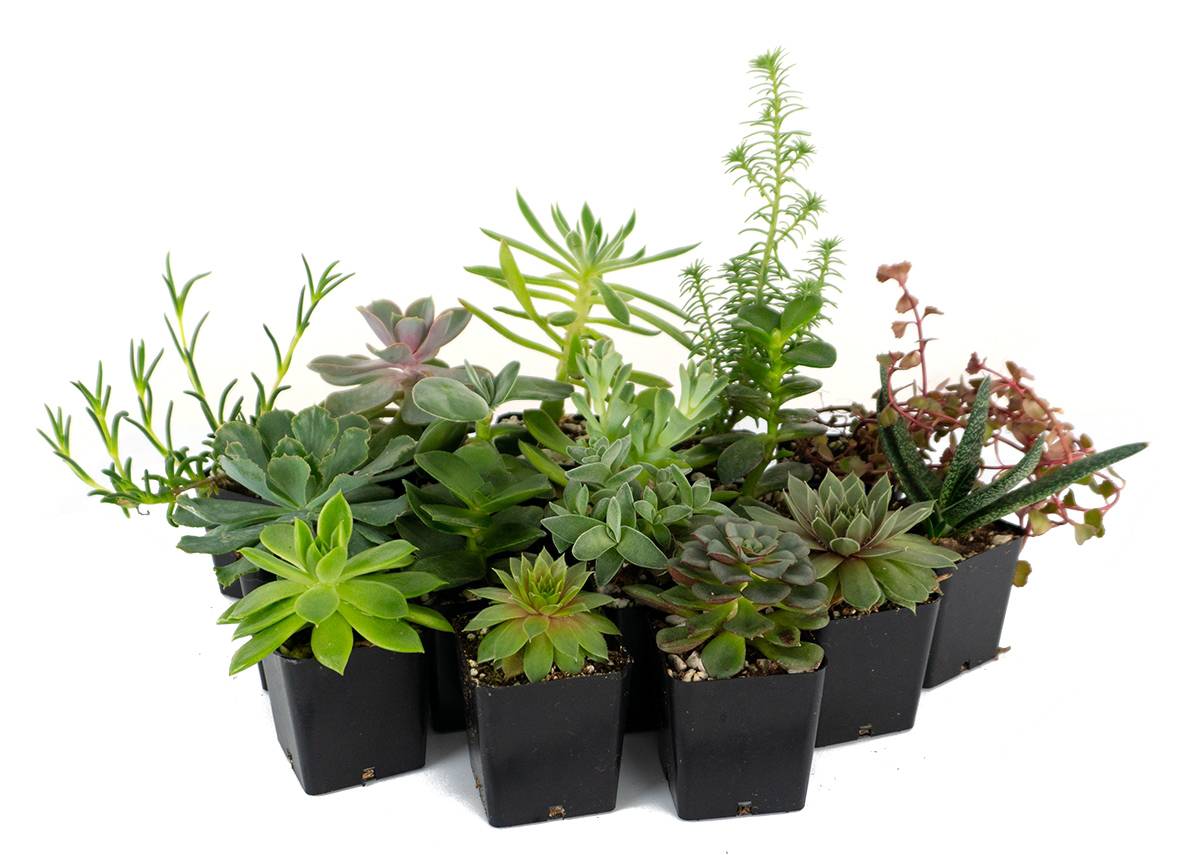Josh's Frogs
Transplanting succulents in containers

Although some plants are sensitive when it comes to being transplanted or relocated, succulents seem to handle it fairly well, as long as they are handled gently.
In the natural habitats of succulents, deep water doesn't exist, so the roots are fibrous and shallow in order to help them catch rainfall; this makes it a little easier to dig up and replant them.
Transplanting isn't complicated, and the steps to do so are listed below:
For starters
One thing to keep in mind is that some succulent plants will have sharp thorns or spikes. Some people will use thornproof gloves when working with these plants; we've seen some people use salad tongs as well - you can use whatever your personal preference may be !
Remove the plant from its current pot
To remove your plant, you will want to grasp it firmly by the base of the stem, getting as close to the soil as possible. Be sure not to grab the leaves. Rock the stem back and forth slightly until it becomes loose from the soil. If there is no stem, you can use a stick, knife, or trowel to loosen the soil around the plant until you are able to take the plant out. For smaller plants, you can also turn the pot upside down and cup your hand around the plant to work it out of the soil.
Clean the root system and let it dry
As you are removing the plants, gently brush any excess soil off the roots. If you need to use water to get some of the soil off, that's okay, but you should let them dry before replanting. Likewise, if any of the roots break off, not to worry; they will grow back. You can also trim any roots you feel may be too long at this point. It won't hurt the plant, and can encourage new growth.
At this point, it is okay to wait a day or so to replant the succulents if you wish. Some people recommend this, even waiting as long as 3-5 days to let the rooots dry if water was needed to clean them. This will also help to heal any stressed or damaged roots if necessary before the plants are moved and watered. If doing this, be sure to keep your plants out of direct sunlight and water.
Replant
Wild succulents tend to grow in sandy, gravelly soil and, while these soils endure heavy rains, they dry out quickly. You will want to ensure there is a good amount of drainage material in whatever soil mix you use in the new pot. Drainage is the key element in your soil combination; these plants can develop root rot if the soil becomes too wet or sits in moist and soggy soil. Thus, succulents should be planted in pots with well-drained soil, preferably that which is made specifically for succulents, such as Josh's Frogs Succulent Soil.
We also recommend using a pot with drainage holes. You can put screen mesh over them if you wish to keep any soil particles from falling through, but it isn't necessary.
When you place your plant into its new pot, you will want to be sure that only the roots - and not the stem - are beneath the soil. The roots should be just under the surface and not visible. Lightly pack the soil down.
If you'd like, you can sprinkle some gravel or pebbles over the top of the soil at this point. The roots will still be fragile; it's a good idea to wait several days before watering.
Before We Go
- If your plant is falling over, you can use a bamboo stick , chopstick, or skewer to offer additional support. You can remove them once the roots have settled in.
- If a succulent has begun to flower, it is not the best time to replant it, as the flower may stop blooming and fall off the plant.
- Be careful not to overwater your plant or water it immediately after repotting. Root rot can be an unfortunate result of too much water or watering too soon.
And as the saying goes, ""That's it, Folks!"" We hope you enjoy your plants!
